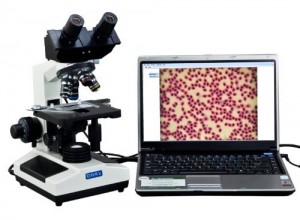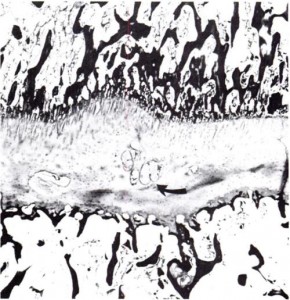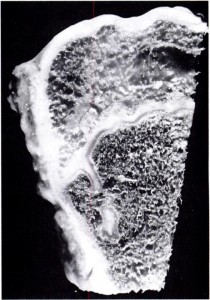| 1 |
Obg-like ATPase 1 |
Suppression of tumorigenicity 5 protein |
| 2 |
Proteasome subunit alpha type-7 |
Glucosylceramidase |
| 3 |
Serine/threonine-protein phosphatase PP1-beta catalytic subunit |
Alpha-crystallin B chain |
| 4 |
Hydroxymethylglutaryl-CoA lyase |
Cytochrome c, somatic |
| 5 |
Paired box protein Pax-7{down as Pax7a} |
Arylsulfatase B |
| 6 |
Arf-GAP with SH3 domain, ANK repeat and PH domain-containing protein 2 |
Translationally controlled tumour protein |
| 7 |
Lysosomal protective protein |
Actin-related protein 2/3 complex subunit 4 |
| 8 |
Protein canopy homolog 4 |
StAR-related lipid transfer protein 3 |
| 9 |
GRB2-associated-binding protein 3 |
Transmembrane protein 5 |
| 10 |
Platelet-activating factor acetylhydrolase IB subunit beta |
Proteolipid protein 2 |
| 11 |
Proteasome subunit alpha type-6 |
Ribonuclease inhibitor |
| 12 |
60S ribosomal protein L30 |
Glycyl-tRNA synthetase |
| 13 |
26S proteasome non-ATPase regulatory subunit 12 |
Oxysterol-binding protein-related protein 3 |
| 14 |
Protein CREG1 |
Forkhead box protein N3 |
| 15 |
Inorganic pyrophosphatase |
Nuclear transport factor 2 |
| 16 |
Myeloid cell nuclear differentiation antigen-like protein |
LIM and SH3 domain protein 1 |
| 17 |
Sorting nexin-3 |
Serine/arginine-rich splicing factor 3 |
| 18 |
Developmental pluripotency-associated protein 4 |
SAP domain-containing ribonucleoprotein |
| 19 |
BUD13 homolog |
Growth/differentiation factor 7 |
| 20 |
cAMP-responsive element-binding protein-like 2 |
Prostaglandin E synthase 3 |
| 21 |
Tau-tubulin kinase 2 |
Ornithine aminotransferase |
| 22 |
Thymosin beta-10 |
Protein DGCR14 |
| 23 |
40S ribosomal protein S20 |
Vang-like protein 2 |
| 24 |
Copper transport protein ATOX1 |
Mitochondrial import inner membrane translocase subunit Tim13 |
| 25 |
Pulmonary surfactant-associated protein D |
Zinc transporter ZIP8 |
| 26 |
40S ribosomal protein S11 |
Thrombospondin-3 |
| 27 |
26S protease regulatory subunit 10B |
Kinase suppressor of Ras 1 |
| 28 |
Haematological and neurological expressed 1-like protein |
Protein KIAA0284 |
| 29 |
Beta-2-microglobulin |
40S ribosomal protein S4, X isoform |
| 30 |
Vasohibin-2 |
Galactokinase |
| 31 |
Ubiquilin-1 |
Scavenger mRNA-decapping enzyme DcpS |
| 32 |
Nucleolysin TIAR |
PHD and RING finger domain-containing protein 1 |
| 33 |
Cleavage stimulation factor subunit 2 |
Acyl-coenzyme A thioesterase 1 |
| 34 |
Heparanase |
Aspartyl-tRNA synthetase, cytoplasmic |
| 35 |
Drebrin-like protein |
TOM1-like protein 1 |
| 36 |
Interferon regulatory factor 2-binding protein-like |
Zinc finger CCHC domain-containing protein 14 |
| 37 |
Golgin subfamily A member 2 |
Anaphase-promoting complex subunit 5 |
| 38 |
Potassium-transporting ATPase alpha chain 1 |
Armadillo repeat-containing protein 8 |
| 39 |
Collagen alpha-1(XVI) chain{up Col16a1} |
Coiled-coil-helix-coiled-coil-helix domain-containing protein 2 |
| 40 |
SWI/SNF complex subunit SMARCC1 |
UPF0568 protein C14orf166 homolog |
| 41 |
Cleavage stimulation factor subunit 3 |
Putative potassium channel regulatory protein |
| 42 |
Centrosomal protein of 170 kDa |
MAM domain-containing glycosylphosphatidyl -nositol anchor protein 1 |
| 43 |
Zinc finger protein 609 |
UPF0160 protein MYG1 |
| 44 |
CD44 antigen |
Nucleoredoxin-like protein 1 |
| 45 |
Transcription factor COE2 |
Osteoclast-stimulating factor 1 |
| 46 |
Heterogeneous nuclear ribonucleoproteins C1/C2 |
Pyrroline-5-carboxylate reductase 1 |
| 47 |
Inosine triphosphate pyrophosphatase |
40S ribosomal protein S5 |
| 48 |
Latexin |
Protein SET |
| 49 |
DNA replication licencing factor MCM2 |
Succinyl-CoA ligase [GDP-forming] subunit beta, mitochondrial |
| 50 |
Motile sperm domain-containing protein 2 |
Anoctamin-1 |
| 51 |
Group XVI phospholipase A2 |
Annexin A7 |
| 52 |
26S protease regulatory subunit 7 |
Fibrillin-1 |
| 53 |
Sodium- and chloride-dependent betaine transporter |
GDP-mannose 4,6 dehydratase |
| 54 |
Sorcin |
Homogentisate 1,2-dioxygenase |
| 55 |
Small ubiquitin-related modifier 2 |
BTB/POZ domain-containing protein KCTD12 |
| 56 |
Dihydropyrimidinase-related protein 3 |
Mitogen-activated protein kinase kinase kinase MLK4 |
| 57 |
ATP-dependent RNA helicase DDX39A |
NEDD4 family-interacting protein 1 |
| 58 |
Eukaryotic translation initiation factor 3 subunit L |
Secretory carrier-associated membrane protein 1 |
| 59 |
Far upstream element-binding protein 2 |
Alpha-2,8-sialyltransferase 8E |
| 60 |
Glypican-5 |
Cytochrome b-c1 complex subunit Rieske, mitochondrial |
| 61 |
Intraflagellar transport protein 74 homolog |
Serine/threonine-protein phosphatase 6 regulatory subunit 2 |
| 62 |
Uncharacterized protein KIAA0141 |
Interleukin-15 receptor subunit alpha |
| 63 |
Paralemmin-3 |
Cell cycle progression protein 1 |
| 64 |
Peroxiredoxin-6 |
Uncharacterized protein C4orf36 homolog |
| 65 |
Proteasome subunit alpha type-2 |
Leukocyte surface antigen CD47 |
| 66 |
Proteasome subunit beta type-3 |
Cyclic nucleotide-gated cation channel beta-3 |
| 67 |
Reticulocalbin-2 |
Fibroblast growth factor 14 |
| 68 |
TAR DNA-binding protein 43 |
Hypoxanthine-guanine phosphoribosyltransferase |
| 69 |
Ubiquitin-conjugating enzyme E2 K |
Interferon alpha-12 |
| 70 |
ATP-binding cassette subfamily D member 4 |
Leucine-rich repeat and IQ domain-containing protein 3 |
| 71 |
Atlastin-3 |
Neuroplastin |
| 72 |
Voltage-dependent l-type calcium channel subunit beta-4 |
Rab proteins geranylgeranyltransferase component A 1 |
| 73 |
Coronin-6 |
SHC-transforming protein 4 |
| 74 |
Endonuclease/exonuclease/phosphatase family domain-containing protein 1 |
Vacuolar protein sorting-associated protein 29 |
| 75 |
Exocyst complex component 1 |
Plakophilin-3 |
| 76 |
Insulin-like growth factor-binding protein 5 |
Transmembrane protein 223 |
| 77 |
Lysosomal alpha-mannosidase |
Clathrin light chain A |
| 78 |
Nucleus accumbens-associated protein 1 |
Apoptosis-inducing factor 1, mitochondrial |
| 79 |
Phosphoprotein associated with glycosphingolipid-enriched microdomains 1 |
Protein-S-isoprenylcysteine O-methyltransferase |
| 80 |
26S proteasome non-ATPase regulatory subunit 7 |
Aspartyl aminopeptidase |
| 81 |
SH3 domain-binding glutamic acid-rich-like protein 3 |
Tumour protein p53-inducible nuclear protein 1 |
| 82 |
Sepiapterin reductase |
Nuclear pore complex protein Nup54 |
| 83 |
Tripeptidyl-peptidase 1 |
ETS domain-containing protein Elk-4 |
| 84 |
V-type proton ATPase subunit d 1 |
Sideroflexin-3 |
| 85 |
V-type proton ATPase subunit G 1 |
Ferric-chelate reductase 1 |
| 86 |
Xaa-Pro aminopeptidase 1 |
Williams–Beuren syndrome chromosomal region 14 protein homolog |
| 87 |
4F2 cell-surface antigen heavy chain |
ER degradation-enhancing alpha-mannosidase-like 1 |
| 88 |
Disrupted in schizophrenia 1 homolog |
Pumilio domain-containing protein KIAA0020 |
| 89 |
Biglycan |
25-Hydroxyvitamin d-1 alpha hydroxylase, mitochondrial |
| 90 |
Apolipoprotein A-I-binding protein |
Uncharacterized protein C8orf42 homolog |
| 91 |
Biliverdin reductase A |
Solute carrier family 12 member 5 |
| 92 |
RNA/RNP complex-1-interacting phosphatase |
Inosine-5′-monophosphate dehydrogenase 2 |
| 93 |
Homeobox protein Hox-A5 |
BRCA1-associated RING domain protein 1 |
| 94 |
Dynein light chain 1, cytoplasmic |
Growth hormone-regulated TBC protein 1 |
| 95 |
Beta-1,3-galactosyl-O-glycosyl-glycoprotein beta-1,6-N-acetylglucosaminyltransferase |
Calcitonin gene-related peptide 2 |
| 96 |
Arf-GAP with dual PH domain-containing protein 2 |
ATP-dependent RNA helicase DDX1 |
| 97 |
ATP-binding cassette subfamily A member 8-B |
Trans-2,3-enoyl-CoA reductase |
| 98 |
RING finger protein unkempt-like |
Laminin subunit gamma-2 |
| 99 |
Ankyrin-2 |
|
| 100 |
Complement C1q subcomponent subunit C |
| 101 |
Probable ATP-dependent RNA helicase DDX59 |
| 102 |
Homeobox protein Nkx-2.2 |
| 103 |
Heterogeneous nuclear ribonucleoprotein M |
| 104 |
FtsJ methyltransferase domain-containing protein 1 |
| 105 |
Uncharacterized protein C1orf141 homolog |
| 106 |
Cell division protein kinase 5 |
| 107 |
Protein tyrosine phosphatase type IVA 1 |
| 108 |
Uncharacterized protein C4orf34 homolog |
| 109 |
Ephrin-A5 |
| 110 |
Cytochrome b-c1 complex subunit 7 |
| 111 |
Endoplasmic reticulum lectin 1 |
| 112 |
Bifunctional apoptosis regulator |
| 113 |
Coiled-coil domain-containing protein 27 |
| 114 |
Long-chain specific acyl-CoA dehydrogenase, mitochondrial |
| 115 |
Iroquois-class homeodomain protein IRX-5 |
| 116 |
Endoplasmic reticulum mannosyl- oligosaccharide 1,2-alpha-mannosidase |
| 117 |
Cysteine protease ATG4B |
| 118 |
Galactoside 2-alpha-l-fucosyltransferase 3 |
| 119 |
Apolipoprotein A-II |
| 120 |
Kelch-like protein 24 |
| 121 |
Serine/threonine-protein kinase Nek5 |
| 122 |
Phosphatidylinositol-4,5-bisphosphate 3-kinase catalytic subunit gamma isoform |



